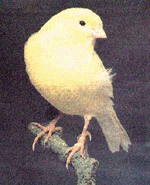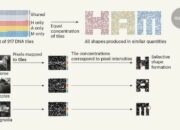Nature has an extraordinary capacity to captivate our senses, and few instances of this wonder are as enchanting as the song of the canary. The melodious chirps of these petite avians are more than just pleasant sounds; they constitute a veritable orchestra of harmonics that illuminate the intricate relationship between biology and acoustics. This exploration delves into the fascinating world of canary song, revealing the underlying physics that render these birds’ vocalizations exemplary in the realm of natural soundwaves.
The canary, a small songbird native to the Canary Islands, exhibits a remarkable ability to produce a range of complex vocal patterns. These songs are not mere chance occurrences but rather precise constructions of sound that resonate with a geometric perfection. Each note emitted is akin to a meticulously crafted brushstroke on a canvas, creating a sonorous mural that elicits a spectrum of emotional responses. The genetic predisposition of canaries for musicality grants them the propensity to develop elaborate vocal repertoires, an inheritance that parallelly echoes through their evolutionary history.
Central to understanding the harmonic nature of canary song is the concept of sound production. Canaries produce their iconic sounds through a specialized vocal organ known as the syrinx, a complex structure located at the base of the trachea. Unlike the larynx, which produces sound through vocal cord vibrations, the syrinx employs a unique mechanism where multiple resonating chambers allow for the modulation of tone, pitch, and volume. This anatomical marvel serves as the canary’s trumpet, enabling it to produce a diverse array of pitches simultaneously, thus facilitating what is termed ‘complex harmonic interplay.’ Such acoustic phenomena can be likened to a finely tuned symphony orchestra, where each note corresponds to a different instrument, harmoniously converging to create a rich auditory tapestry.
The harmonic principles governing canary song draw heavily from fundamental concepts in acoustics. In simpler terms, harmonics are the overtones that accompany a fundamental frequency; they are the echoes that follow the lead note, enhancing its emotional and tonal character. A canary’s song is often structured in a series of ascending and descending notes that create intricate patterns of harmony. When examined through the lens of physics, these musical displays can be interpreted as a series of waveforms, composite sounds that interlace to form a rich auditory experience akin to the ripples created by a pebble tossed into a tranquil pond. The ripples, or harmonics, propagate outward, each wave maintaining a unique frequency while contributing to the overall resonance.
Research indicates that the harmonic structure of canary songs is not only an aesthetic delight but also serves critical functions in communication and mating behaviors. The complexity of a male canary’s song is directly correlated with his fitness as a mate; females are instinctively attracted to males who possess extensive and intricate song repertoires. This inclination towards harmonic complexity is analogous to the human appreciation for a skilled musician’s performance, where mastery and finesse elevate the experience beyond mere auditory pleasure to a profound expression of artistry.
Moreover, the relationship between song complexity and mate selection is underscored by the principle of sexual selection, which posits that certain traits evolve because they enhance reproductive success. Thus, the canary’s harmonic prowess reflects not just individual capability but an evolutionary strategy rooted in survival and procreation. Each trill, chirp, and flourish carries implications of vigor; a richly melodious song advertises a male’s health and vitality, positing him as a desirable mate within the competitive avian landscape.
Interestingly, canary song melodies are not static; they are dynamic and exhibit a remarkable adaptability. Canaries learn their songs through a process that mirrors human language acquisition. Young canaries listen to adult songs, internalizing patterns and eventually synthesizing their versions that may diverge from their teachers. This behavioral characteristic, termed “song learning,” highlights an essential aspect of avian culture and social structure. Just as human communities thrive on shared narratives and cultural exchanges, so too do canary populations, where song variation becomes a hallmark of individual and collective identity.
Furthermore, environmental factors significantly influence song characteristics. Habitat, population density, and even urban noise pollution can impact how and what canaries sing. In urban settings, for instance, canary songs may evolve to adapt to higher decibel levels, resulting in more robust and penetrative frequencies. Such adaptability underscores an inextricable link between melody and environment, exemplifying the fluid nature of sound as it interacts with the complexities of the physical world.
In conclusion, the hypnotic strains of canary song are more than just delightful trillings— they are sophisticated manifestations of evolutionary ingenuity and acoustic excellence. The intricate harmonics produced by these small songbirds serve as a testament to the confluence of biology, physics, and art, inviting us to ponder the deeper meanings embedded within the natural world. Their serenades echo the fundamental principles governing sound itself, while also revealing a rich tapestry of social dynamics and ecological interactions. Through the lens of the canary’s song, we can appreciate the sublime melodies of life that resonate within the intricate symphony of the universe.












